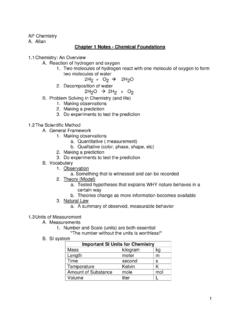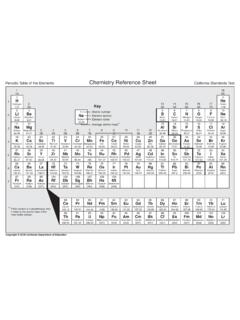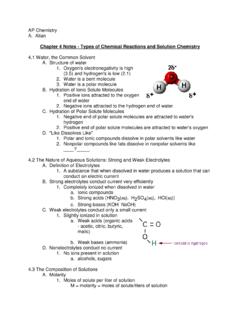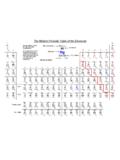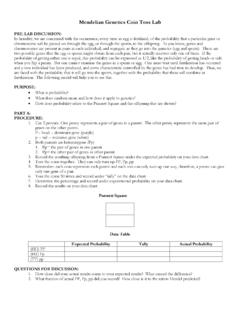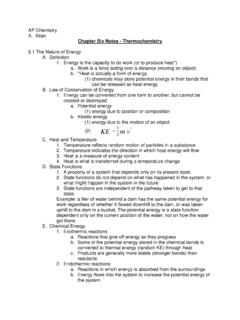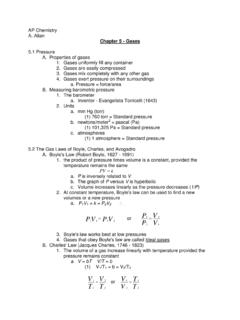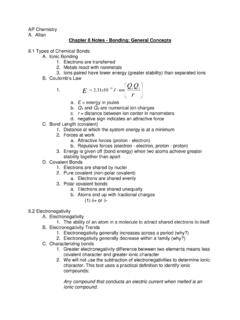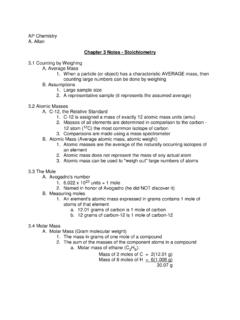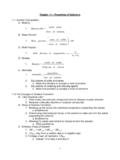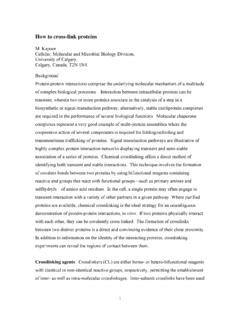Transcription of Structure of Proteins, Carbohydrates and Fats
1 Structure of Proteins, Carbohydrates and Fats Anthony Carpi " Carbohydrates ," Visionlearning Vol. CHE-2 (5), 2003. Anthony Carpi "Fats and Proteins," Visionlearning Vol. CHE-2 (6), 2003. Fats Fats are a sub-group of compounds known as lipids that are found in the body and have the general property of being hydrophobic (meaning they are insoluble in water). Fats are also known as triglycerides, molecules made from the combination of one molecule of glycerol with three fatty acids, as depicted at the right: Proteins Proteins are polymers of amino acids. While there are hundreds of thousands of different proteins that exist in nature, they are all made up of different combinations of amino acids.
2 Proteins are large molecules that may consist of hundreds, or even thousands of amino acids. Amino acids all have the general Structure : The R in the diagram represents a functional group that varies depending on the specific amino acid in question. For example, R can be simply an H atom, as in the amino acid glycine, or a more complex organic group. When 2 amino acids bond together, the two ends of nearby amino acids are released and the carbon (called a carboxyl) end of one amino acid bonds to the nitrogen end of the adjacent one forming a peptide bond, as illustrated below right. When many amino acids bond together to create long chains, the Structure is called a protein (it is also called a polypeptide because it contains many peptide bonds).
3 Glycerol 3 Fatty Acids (where R represents a long C-C-C chain) Fat (triglyceride) (where R, R' & R" may or may not be the same) General Structure of an Amino Acid A Peptide Bond Carbohydrates There are two types of Carbohydrates , the simple sugars and those Carbohydrates that are made of long chains of sugars - the complex Carbohydrates . Simple Sugars: All Carbohydrates are made up of units of sugar (also called saccharide units). Carbohydrates that contain only one sugar unit (monosaccharides) or two sugar units (disaccharides) are referred to as simple sugars. Two of the most common monosaccharides are glucose and fructose.
4 Disaccharides have two sugar units bonded together. For example, common table sugar is sucrose (right), a disaccharide that consists of a glucose unit bonded to a fructose unit. Complex Carbohydrates : Complex Carbohydrates are polymers of the simple sugars. In other words, the complex Carbohydrates are long chains of simple sugar units bonded together (for this reason the complex Carbohydrates are often referred to as polysaccharides). Starch (above) is a polymer of the monosaccharide glucose (n is the number of repeating glucose units and ranges in the 1,000's). Starches and cellulose are complex Carbohydrates used by plants for energy storage and structural integrity.
5 Glycogen, another polymer of glucose, is the polysaccharide used by animals to store energy. Both starch and glycogen are polymers of glucose, however starch is a long, straight chain of glucose units, whereas glycogen is a branched chain of glucose units. Glucose Fructose
